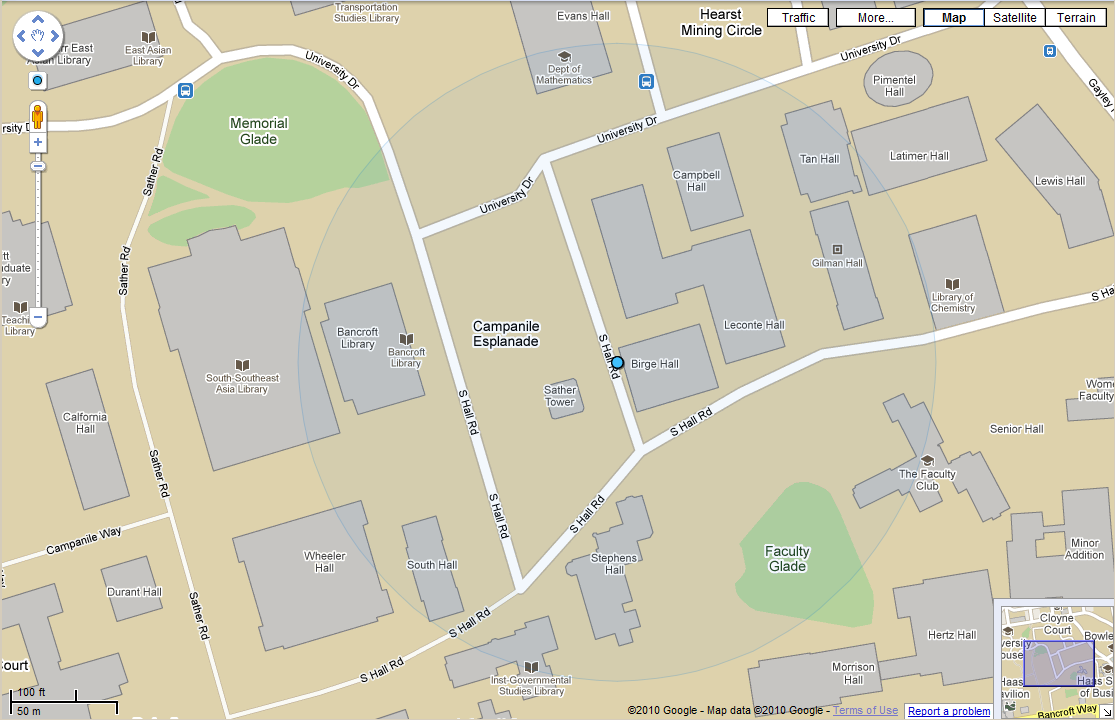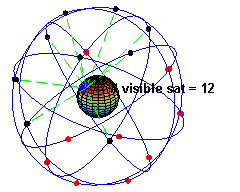(2) Abstract
Mobility is (one of) the key defining characteristics of mobile devices, and many use cases and scenarios not only depend on mobility (the ability to move), but on location (the knowledge of where something moved to). Determining the location of a mobile device can be done in a variety of ways, and in this lecture we briefly look at various localization technologies (IP address, Wi-Fi, cell phone, GPS). We then look at the W3C Geolocation API, which is currently under development and allows scripting code to request the location of the device it is running on. Finally, we discuss some privacy issues around automated access to location information.
Geolocation API
(23) W3C Geolocation API basics
navigator.geolocation. object requests the info bar from the browser getCurrentPosition does not immediately give a web app access to geolocation of the browser- The user must opt-in to revealing their location
navigator.geolocation. is a global object, meaning the user opt-in cannot be circumvented
function get_location() {
navigator.geolocation.getCurrentPosition
(show_map);
}
(24) W3C Geolocation API
- A call back function is required to get location
- An object with two parameters,
coords and timestamp - At least three parameters can be expected by default,
coords.latitude, coords.longitude, and coords.accuracy
function show_map(position) {
var latitude = position.coords.latitude;
var longitude = position.coords.longitude;
// show a map etc.
}
(25) Geolocation API Demo
<!DOCTYPE html>
<html>
<head>
<title>Minimal Geolocation Demo</title>
</head>
<body>
<h1>Minimal <a href="http://www.w3.org/TR/geolocation-API/">Geolocation</a> Demo</h1>
<p>You are <span id="location">somewhere</span>.</p>
<script type="text/javascript">
navigator.geolocation.getCurrentPosition(function(position){
var lat = position.coords.latitude;
var long = position.coords.longitude;
var coord = "at (" + lat + "," + long +")";
document.getElementById('location').textContent = coord;
});
</script>
</body>
</html>(26) Geolocation-Based Image
<!DOCTYPE html>
<html>
<head>
<title>Geolocation and Maps</title>
<script src="jquery.js" type="text/javascript"></script>
<script type="text/javascript">
$(document).ready(function() {
$("p").click(function() {
navigator.geolocation.getCurrentPosition(function(position){
var lat = position.coords.latitude;
var long = position.coords.longitude;
$("p").after("<img src='http://maps.google.com/maps/api/staticmap?center=" + lat + "," + long + "&zoom=16&size=512x512&sensor=false'/>");
});
});
});
</script>
</head>
<body>
<h1><a href="http://www.w3.org/TR/geolocation-API/">Geolocation</a> and Maps</h1>
<p>Are you curious where you are? Click here!</p>
</body>
</html>(27) WGS84 Coordinates (World Geodetic System)
- GPS-based coordinates have become the
norm
- globally usable and readily available from GPS receivers
- printed maps start supporting WGS84 coordinates as well
[http://www.w3.org/TR/geolocation-API/#position_interface] [http://www.w3.org/TR/geolocation-API/#coordinates_interface](28) Geocoding and Reverse Geocoding
- The current API only supports coordinates
civic locations
will be supported in the next version
- Geocoding turns locations into coordinates
Berkeley, CA
→ (37.875733,-122.265092)
- Reverse Geocoding turns coordinates into locations
- (37.875733,-122.265092) →
Berkeley, CA
- Geocoding is not a simple 1:1 mapping operation
- most locations are not points; they are areas
- most points can be associated with more than one location
- [http://www.geonames.org/] provides data and Web services for (reverse) geocoding
- [http://ws.geonames.org/findNearby?lat=37.875733&lng=-122.265092]
- [http://ws.geonames.org/extendedFindNearby?lat=37.875733&lng=-122.265092]
- [http://ws.geonames.org/findNearbyPostalCodes?lat=37.875733&lng=-122.265092]
![]() [http://creativecommons.org/licenses/by/3.0/]
[http://creativecommons.org/licenses/by/3.0/]

